Planting and Growing Epimedium a.k.a. Horny Goat Weed in your garden
Again, blame it on this long, drawn-out, cold and snowy winter but I am really digging into certain groups of plants and wanting to add more and more of them to the garden. One genus that we already have in abundance at Coastal Maine Botanical Gardens is Epimedium (commonly known as Horny Goat Weed, bishops hat, barrenwort, and Bishop’s Mitre.).
The more I study and look at Epimedium, the more I find to love. This rather large genus has 54 different species distributed around Asia, Europe and Northern Africa. (rubrum, frohnleiten and sulphureum are among my favorites – but I describe a selection of great barrenwort options below)
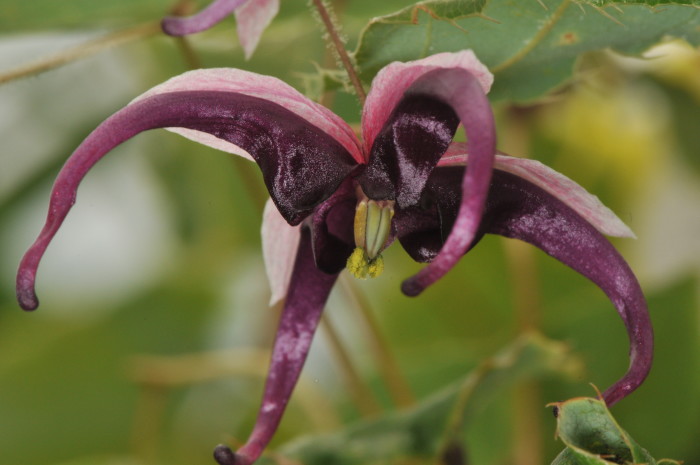
It is in the barberry family but please do not let that make you think that you will see thousands of Epimedium seedlings around your garden like you would with a barberry. The seeds of bishops hat are small and slow to germinate.
Epimediums slowly spread by way of stolons, with some species spreading faster than others. Do not expect the rapid spread of a bamboo, these plants, also called barrenwort or bishop’s cap, are slow to multiply and the best way to propagate the barrenworts is through division in late summer after flowering.
If you want to divide your plants, dig them after they flower and divide the clump using sharp, bonsai shears. Once you have new divisions, cut the leaves back by one-third to encourage new root growth. More details about cultivation, species, and propagation can be found in this article by Tony Avent.
Exactly what is the draw to Epimediums?
I would have to say it is the combination of drought and shade tolerance, deer-resistance, evergreen foliage in warmer climates, and dainty flowers that from a distance, resemble some orchids.
Yes, they are deer resistant!
Which is a good thing because I would hate to see what would happen if deer developed a taste for the plants.
One of the other common names is horny goat weed. You can actually buy horny goat weed in the supplement aisle of your local, fancy health food supermarket. Legend has it that a Chinese species of Epimedium was growing in an area where a goat herder was allowing his flock to graze.
After browsing on a patch of epimedium, the goats suddenly became more “active,” if you know what I mean. The plants contain icariin, which acts in a similar fashion to the active ingredient in Viagra. Since this is a family show, I am going to stop this analysis right here and again say that I am glad that deer do not like the plants.
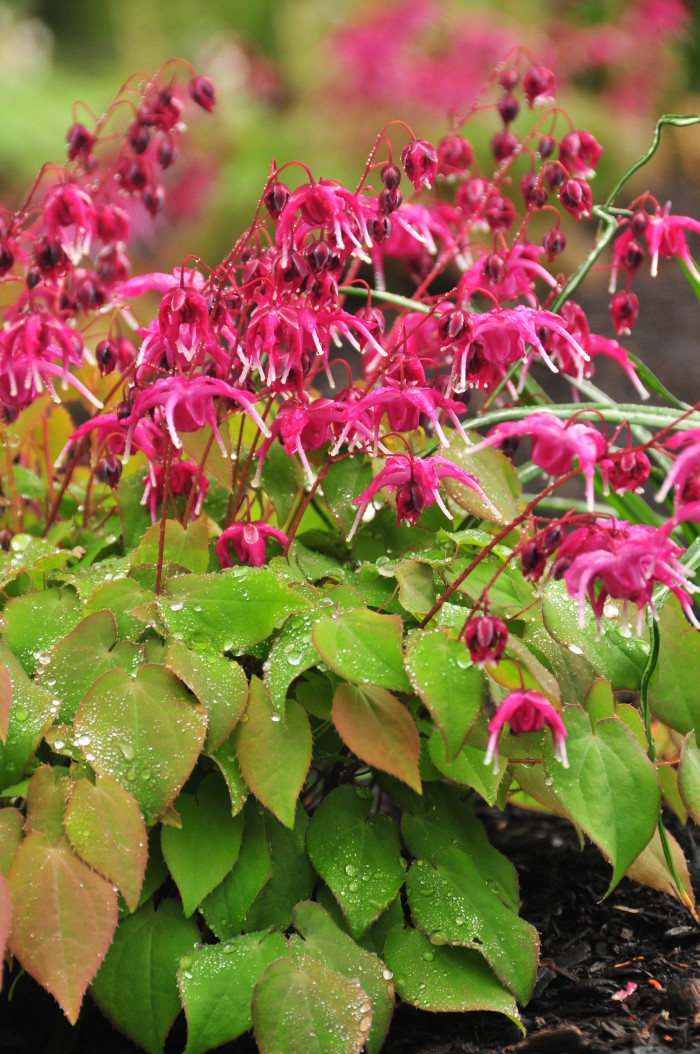
Small but impressive foliage and flowers
Getting back to gardening, the epimedium flowers are spectacular. Even though they are small, usually no larger than a couple of inches in diameter, when planted en masse, the flowers make a tremendous impact in the garden. Flower colors range from white to yellow and violet, with many bi-colored flowers.
A mass planting of barrenwort gives off an almost misty appearance because the flowering stalks are extremely fine, resembling stiff wires. The flowers dangle above the coarse foliage, with the foliage serving as the perfect backdrop to the flowers.
The foliage is the perfect complement, coming in different shades of green, with some plants having tinges of red or even some dark purple colored cultivars.
One of my favorite species, Epimedium wushanense, has protruding “spines” from each of its leaves. A particular cultivar, ‘Sandy Claws’ has really pronounced “spines” and dark chocolate leaves in the spring. I have written about the species before and now am falling in love with the entire genus.
Barrenworts are still gaining in popularity as a plant to add to the garden. They are slow but steady. If you have a spot where few other flowering plants will grow, give one of the Epimedium a shot this spring.
–Rodney
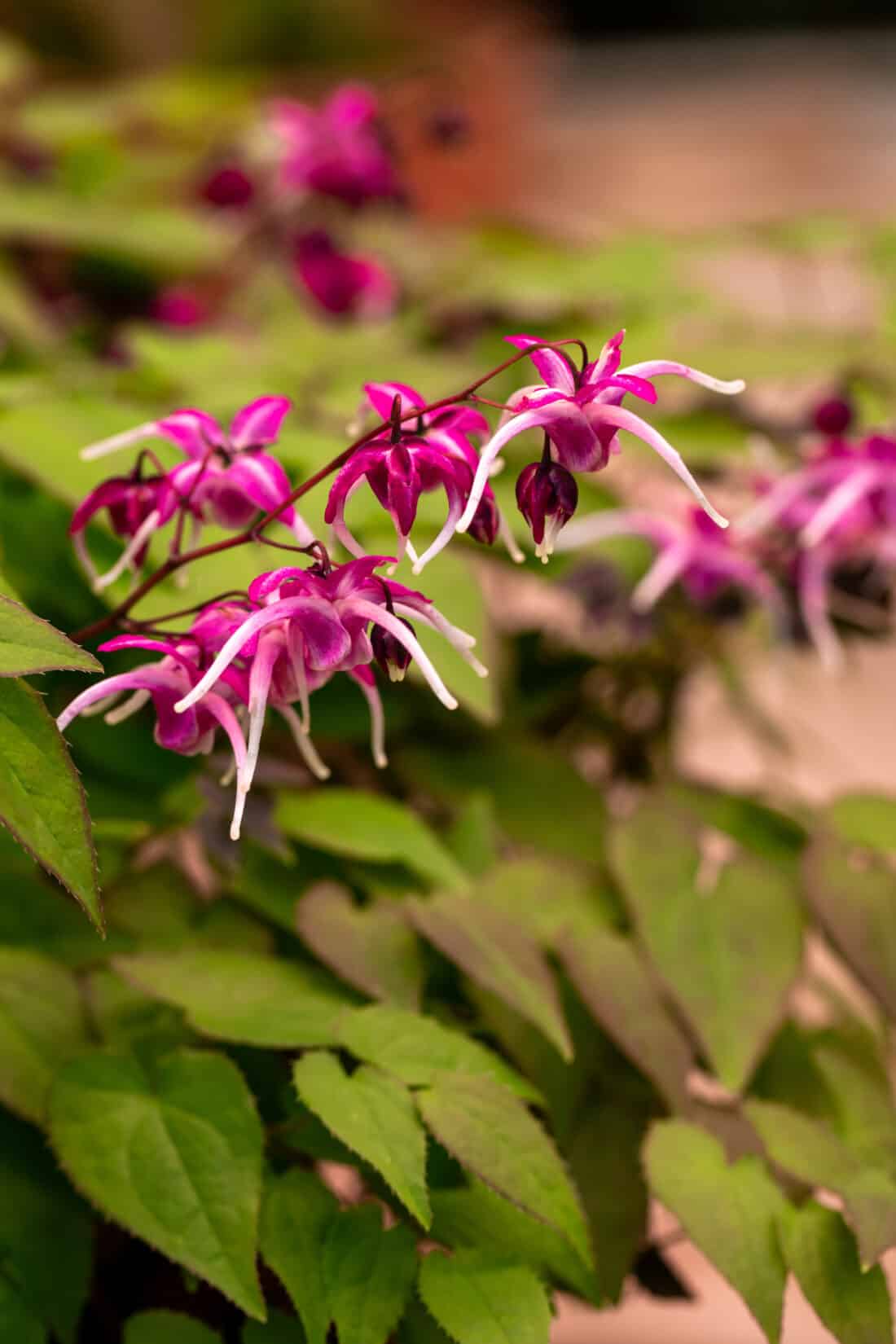
How to use barrenwort in your garden:
Epimediums are prefect for woodland garden settings, where they can naturalize and create a carpet of lush foliage and delicate blooms. Combine them with other shade-loving plants like ferns, hostas, and hellebores to craft a serene and enchanting woodland oasis. Low-growing epimedium varieties are good edging plants along pathways or as ground covers to soften hardscaped areas. Their dense foliage suppresses weeds and adds a refined touch to garden borders and walkways.
Epimediums with cascading foliage work wonders in rock gardens and on slopes. Their arching leaves gracefully spill over rocks and create a soft, natural look that harmonizes with the surrounding landscape.
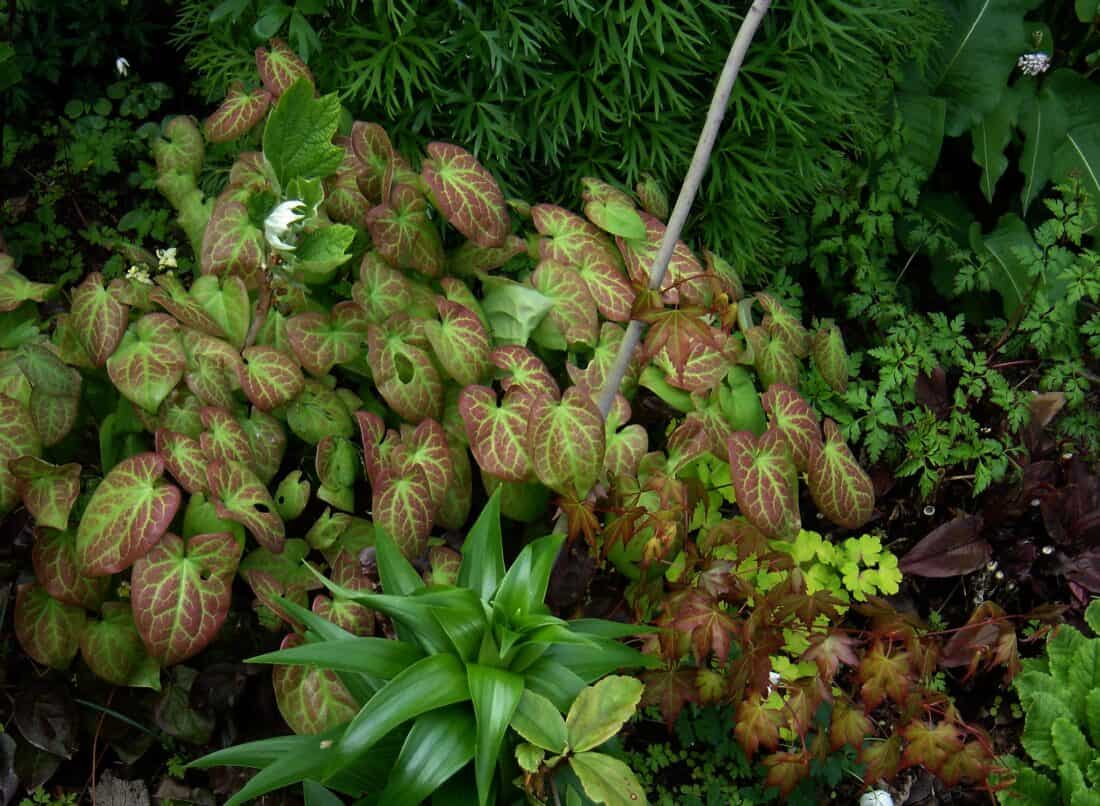
You can also pair them with spring-blooming bulbs like daffodils and tulips and snowdrops (leucojum) to create captivating displays as the seasons transition. Their foliage will fill the gaps left by the fading bulbs, ensuring continuous interest.
But what Epimediums absolutely excel at is growing underneath and around the roots of trees. This is one of the most challenging places to grow anything (given the extra dryness and the the extra shade) and epimediums are a perfect plant for this spot and they will be able to form the basis of shade garden.
Design ideas and Companion plants for using Bishop’s Hat in the garden:
- Plant in drifts and pair with other smaller shade perennials like small or dwarf hostas.
- Bloodroot (sanguinaria canadensis) is an eye-catching flower (mine literally glow white in the spring – more white than any other bloom in the garden) that has lily pad like fingered leaves that last through the garden season. Together Bloodroot and barrenwort will make a low and contrasting textural tapestry.
- Podophyllum patalatum (mayapple) is another bigger leaved plant that will contrast with the small often heart shaped leaves of bishop’s hat. The mayapples will be taller so can be planted through the epimedium, or in the back, leaving the lower growing barrenwort at the front.
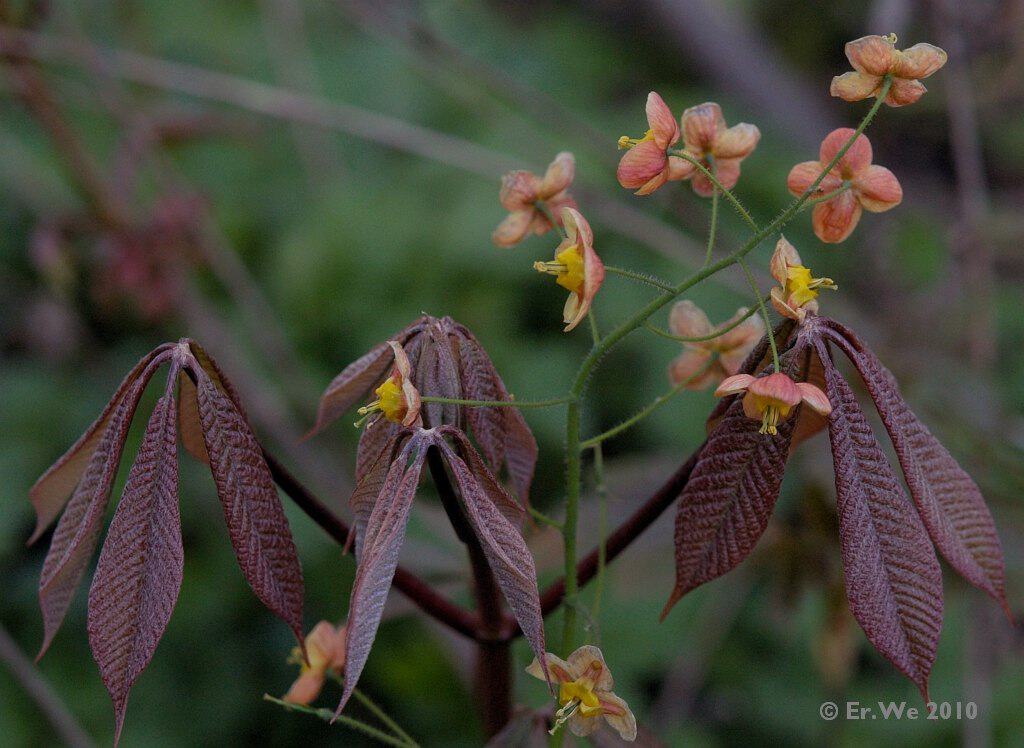
The best Epimedium to grow in your shade garden:
Epimedium Frohnleiten
Frohnleiten one of my favorite epimedium varieites – Epimedium Frohnleiten is a cross between E. perralderianum and E. pinnatum subsp. colchicum and it has some of the showiest leaves and flowers. Early red leaves are marbled with green veins and when they bloom there are beautiful clumps of buttery yellow flowers. Epimedium Frohnleitne is a german hybrid and great for Northern gardeners (like here in New England). It can live, spread and be split to cover a wider area for decades.
Epimedium rubrum
Epimedium x rubrum has spiny toothed leaves – flush red when young, then turning red and reddish brown in the autumn and remaining on the plant through the winter. The epimedium rubrum flowers are red and yellow.

E. grandiflorum ‘lilafee’
If you are looking for violet flowers, Epimedium lilafee is a great option. Epimediums are commonly called bishop’s hat because of their resemblance to a four-clergyman’s biretta or barrenwort because the root extract was believed to prevent female conception (note – this is not true).
E. youngianum ‘Niveum’
Epimedium Niveum blooms are bright white. Like all other epimediums, it is deer and rabbit resistant, but epimedium niveum is a little smaller than most other varieties.
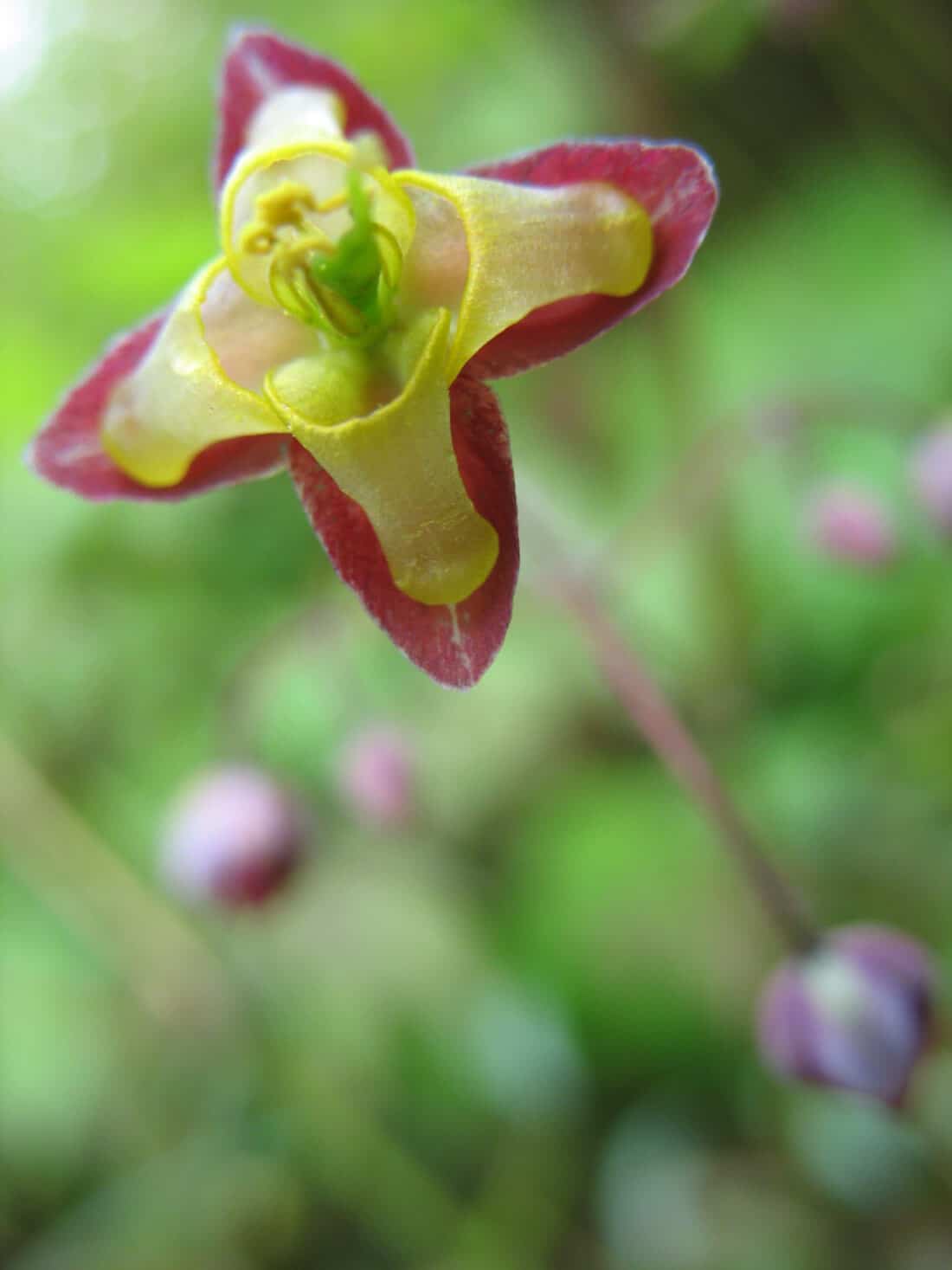
Epimedium koreanum
Epimedium koreanum is also knows as epimedium grandiflorum f. flavescens. Koreamun has is pale yellow flowers and is not commonly grow in the garden. It is however the variety used to create Horny Goat weed products that are sold commercially to treat a variety of ailments including prostate cancers. Also known as Nakai, epimedium koreanum is commonly used in traditional Korean and Chinese medicine to treat a variety of diseases.
E. alpinum
The leaves of E. alpinum are bright chartruese green but they often turn crimson in the winter. The flowers of epimedium alpinum are red and white but are typically held under the leaves so you don’t tend to see them as a featured of this garden plant. Epimedium alpinum was described and published first by Carl Linnaeus in 1753
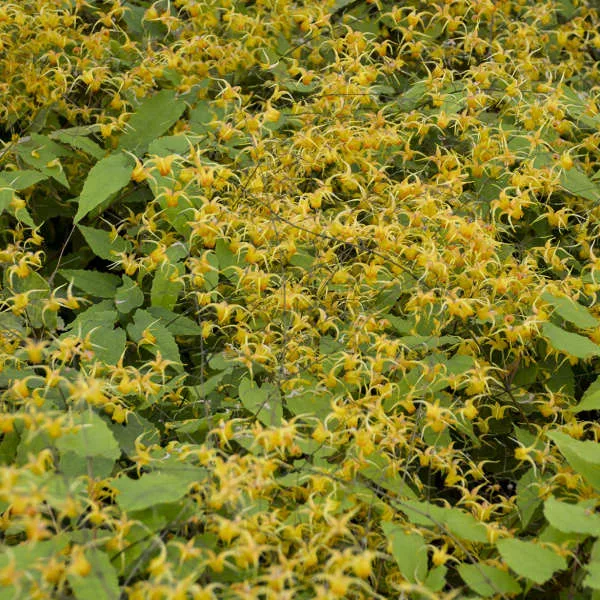
Epimedium ‘amber queen’
Amber queen is an Epimedium is very eye-catching. Like the others, it has airly delicate flowers, but these are bright yellow with orange red centers, but when viewed from a distance they look orange.
Orange Queen Epimedium
Epimedium warleyense ‘orange queen’. Has acutal orange flowers and tends to be evergreen to zone 7. Give it a good cut back in the spring to encourage a new flush of the unique orange blooms.
E. pubigerum
A clumping variety of barrenwort, Epimedium pubigerum has a distinctive glossy green spiny and shiny leaf. The flowers are white to off white color and it is a plant that is featured in famed gardener Beth Chatto’s collection of plants.
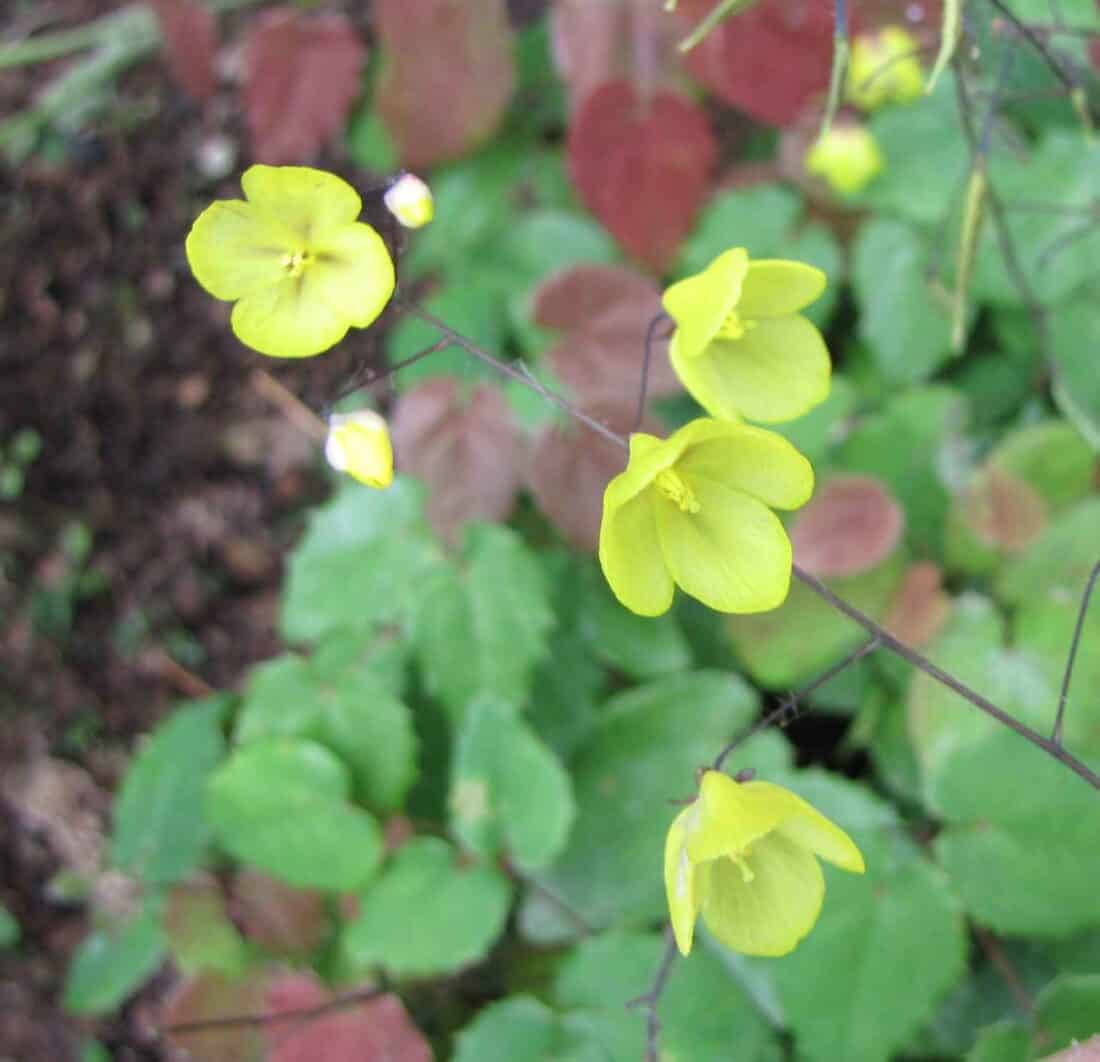
Epimedium versicolor ‘sulphureum’
E. versicolor ‘sulphureum’ is the the most tolerant of full sun and drier soil (where other epimedium are not). The Epimedium versicolor generally has copper-colored young leaves and pink and yellow flowers with red tinted spurs but Sulphureum epimedium has mottled red leaves in the spring that turn green in the summer and then go back to red in the autumn. Sulphureum epimedium also has yellow (sulphur-colored) flowers that are soft (not too acid-y) and are held on long wirey stems.
You can also read about Epimedium wushanense.
Where to buy epimedium
Caring for Epimedium:
How fast does Epimedium spread?
I have found that in deep shape, mine spread about 7-8 inches in diamer per year. My conditions are deep shade and on the diry side – with more moisture and light they may spead a bit faster. If you are going for full coverage I’d plant them in triangles that have 12″ sides. This way you will get full coverage in less than two years (and maybe even one!)
Are Epimediums invasive?
Epimediums are not native to North America – but there are currently (as of August 2023) no varieties that are considered invasive in any region by the USDA. They grow slowly by undergorund forbs and tend to prefer woodland, scrub, and shady rocky places.
How do you grow and care for Epimedium and should you cut back Epimedium?
The foliage of epimedium is best of you clip back old dead foliage late in winter or early spring (right before the flower spikes start to form). They like to be kept cozy with a deep winter mulch – particularly where there is hard frost and snow.